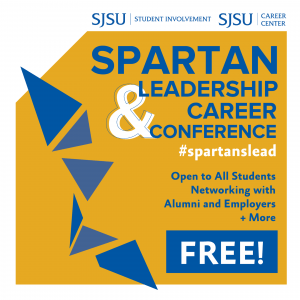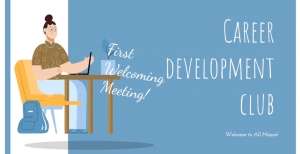Last week, we were thrilled to bring in guest speaker Calvin Liu Navarro, Technical Recruiter at
LinkedIn, for the second installment of our three-part fall Career Workshop Series. Born in Hong Kong and raised in China, Calvin first came to the U.S. on an F-1 visa to complete his undergraduate degree
in Business Management at the University of California, Santa Cruz. In his talk, Calvin shared his job search experience as an international student, gave advice to current students, and provided insight from the perspective of a Technical Recruiter. Below are the key takeaways from our conversation with Calvin.
Network, network, network!
- It may seem daunting for international students who have to start from scratch in a different culture and maybe even a different language, but challenge yourself to step outside of your comfort zone.
- Start now by getting involved with student organizations. Those organizations might have alumni connections or with upperclassmen who can provide guidance.
- Connect with others on LinkedIn and build your connections (see note on cold calling).
- Make friends with both international and domestic students. It’s easy to only stay with people from your home country, but by meeting others from around the world and the U.S., you’ll gain invaluable perspectives and worldwide connections.
- On-campus jobs are an opportunity to connect with other student assistants as well as faculty and staff.
Cold Calls (or emails)
A “cold call” is when you reach out to someone you’ve never met before. It’s fine to cold call via email, but you have to be willing to accept the fact that 99% of the time you won’t get a response. Be empathetic and understand that everyone’s busy and they might not have the time to get back to you. But also, don’t lose hope if people don’t respond. There are millions of people in this world, and someone will respond to you.
If you do send a cold call email, here’s what to do:
- Introduce yourself (who you are, when you’re graduating, what your major is)
- Explain why you’re reaching out to that person.
- End with a call to action. This is super important. Give them a reason to respond to you by asking them a question: Can we set up a 10-minute call so I can introduce myself better? Would you be open to a quick call so that I can learn more about…?
- Don’t forget to send a thank you if they do respond to you!
What are recruiters looking for?
- Soft Skills. Technical skills can be taught; soft skills take time to be developed. What are some ways that you can work on those soft skills while you’re still in school?
- Showcase your learning. You might have those soft skills, but you’ll need to be able to talk about them and give specific examples that demonstrate that you have those skills.
- How well are you able to work on diverse teams? Talk about a time when you faced conflict when working in a group. How did you resolve that conflict?
- How quickly are you able to learn things? Discuss a time when you had to pick up a skill or learn new material quickly. What did you do, and what was the outcome?
- How well can you adapt to different situations? As an international student, you’ve had to transition to life in a new country, culture, and maybe a new language. How did you overcome and transition?
- How well are you able to collaborate with others? Think about a time you had to collaborate on a school project or a club event. Be able to describe how you worked with other entities. What made the collaboration a success?
- Passion. You may have the skills, but do you have the passion for this job or this company? What is it about this position that excites you?
- Do your research. Know the company you’re applying to, and be able to clearly explain why you want to work for that company. When a candidate says they want to work at LinkedIn because it is a large company or a leader in the industry, Calvin asks, “Why not apply to Google? They’re a big company.” Be specific with your reasons, and explain why this particular company is so important to you.
Recruiting & Hiring Cycle LinkedIn hires year-long, though different units may have different surges throughout the year.
- Start early. In general, tech companies hire nearly a year in advance. So, in August-October, they post jobs for the following summer.
- Check job boards frequently. LinkedIn posts jobs for a maximum of 2 weeks, but oftentimes for much shorter periods of time. This is because of the sheer volume of applications they receive. Sometimes internship positions are posted for only a few days, so you need to have your resume updated and ready to go. Apply as soon as you see the posting.
- For entry level positions, look for/reach out to “Campus Recruiters” versus “Technical Recruiters”. Campus Recruiters are hiring for entry-level positions or internships, and they’re looking specifically for recent graduates. Technical Recruiters are looking for experienced workers, and unfortunately, LinkedIn doesn’t count your time at an internship towards work experience minimum requirements (e.g., 2 years experience required).
Advice for International Students
- Leverage your challenges; make them your advantages. International students face many challenges, but use them to your advantage! You’ve had to transition to a new culture, take yourself out of your comfort zone, make new friends, and be thousands of miles away from your family. Ask yourself: How have these challenges made me stronger?
- Network and have patience! You never know how those connections can open up opportunities down the line.
- Update your LinkedIn Profile. Cover letters are nice, but they’re generally only around 3 paragraphs. Use your LinkedIn profile to showcase your skills. It can tell a better, more complete story than a cover letter.


